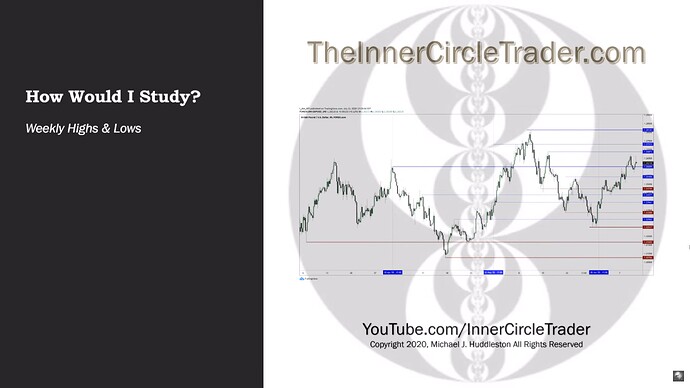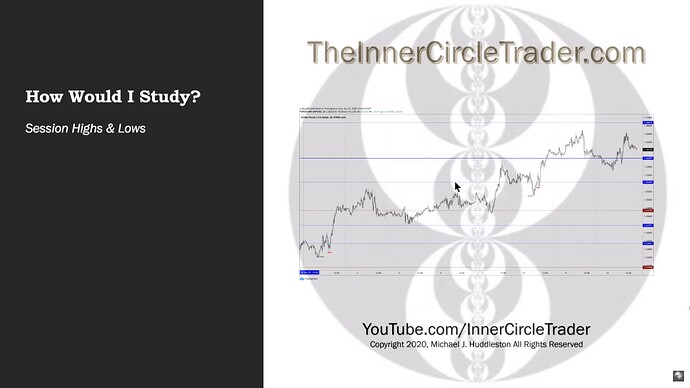Notes
- Michael recommends watching this video multiple times to fully grasp the concepts, as the initial viewing might not be enough for complete understanding.
- Key trading levels to watch:
- Monthly highs and lows.
- Weekly highs and lows.
- Daily highs and lows.
- Session highs and lows.
- We should discard the reliance on classic chart patterns, trend lines, moving average crossovers, overbought/oversold indicators, and divergences. The focus should be on understanding the open, high, low, and close of various intervals.
- We don’t need perfection to make money.
- Pursuing perfection will cause you to lose multiple live accounts because you want to be right. It’s not about being right. It’s about being aligned with the order flow. You want to be in sync with the algorithm.
- To determine where the price is headed on a monthly chart, we need to analyze how the market reacts to the monthly highs and lows over the past three months.
- Breaking above multiple old highs (weekly or monthly) indicates bullish sentiment (order flow) while breaking below multiple old lows suggests bearish sentiment.
- Opportunities can arise every day, but not all days are suitable for trading.
- Michael looks for Optimal Trade Entry (OTE) setups during the London and New York sessions.
- The given time ranges for the kill zones are no longer valid. The official kill zone time ranges are listed in the ICT Mentorship Core Content - Month 8 - Defining The Daily Range lesson.
- In this lesson, Michael basically summarizes how to use highs and lows analysis to find the One Shot One Kill (OSOK) setup every week.
Where Do Steady Setups Form
Monthly Highs And Lows
Weekly Highs And Lows
Daily Highs And Lows
Session Highs And Lows
Next lesson: ICT - If I Could Go Back & Tell Myself What I Know Now - Volume 3
Previous Lesson: ICT - If I Could Go Back & Tell Myself What I Know Now - Volume 1





